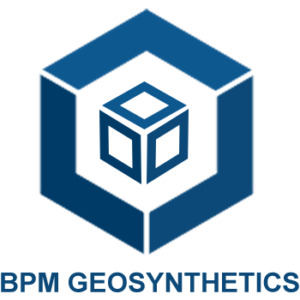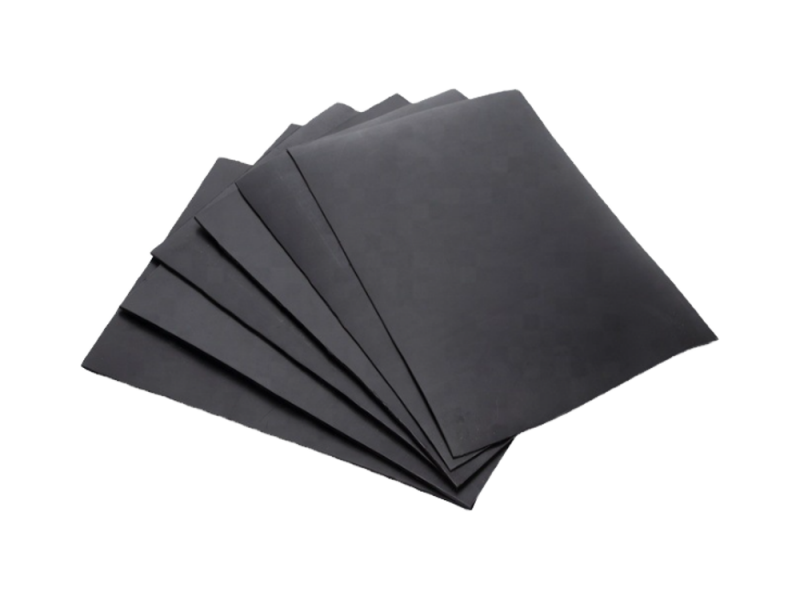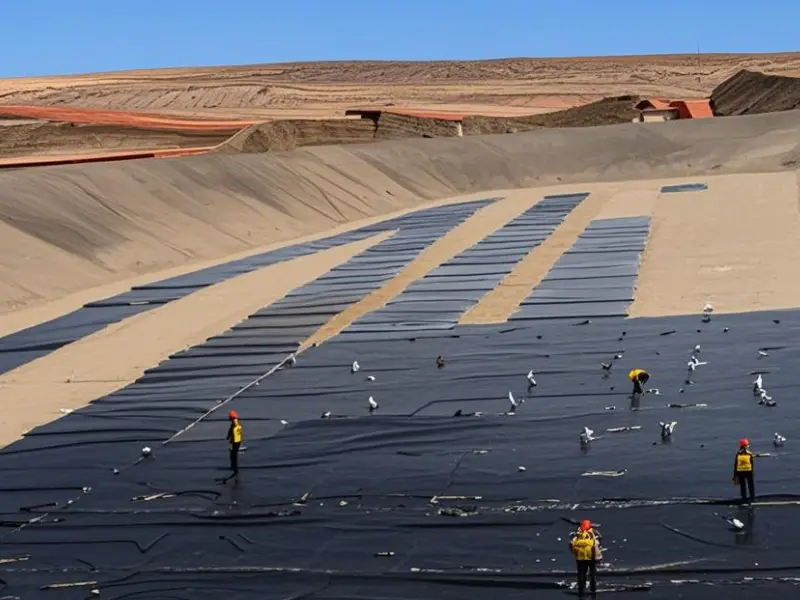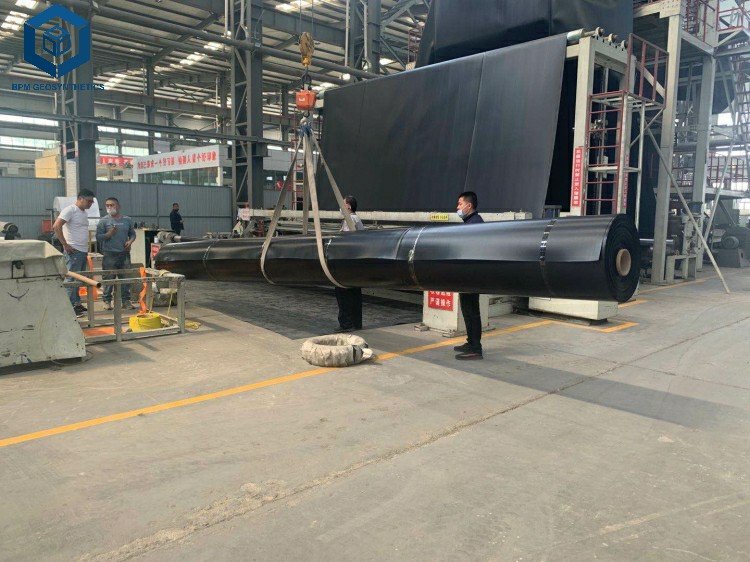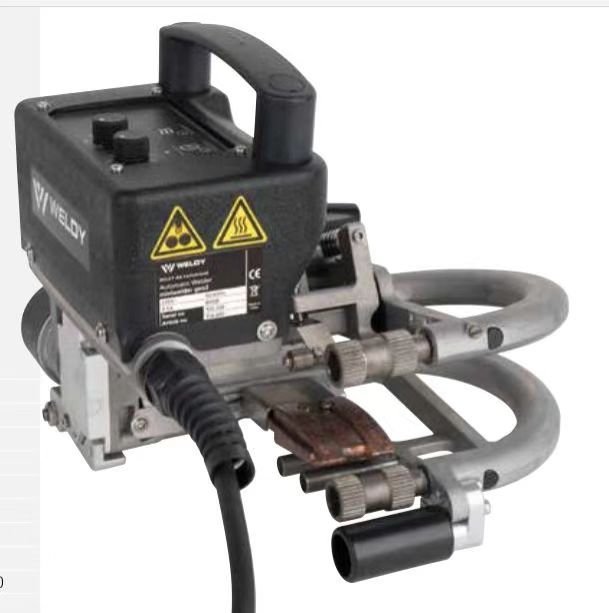1. What Is an Geomembrane For Mining Projects?
Geomembrane for mining projects is a type of geosynthetics. The use of geosynthetics originated in the 1950s, and geomembranes in China were a component of China’s Eighth Five-Year Plan. HDPE geomembrane is a waterproof barrier material made from high-density polyethylene resin (geomembranes with a density of 0.94 g/cm³ or higher). HDPE geomembrane, short for “high-density polyethylene film,” exhibits excellent resistance to environmental stress cracking, low temperatures, aging, and corrosion, and a wide operating temperature range (-60°C to +60°C).
Geomembrane for mining projects is a waterproof barrier material made primarily from high-density polyethylene resin. It possesses excellent physical and mechanical properties, chemical stability, and aging resistance. Its primary functions include preventing seepage, enhancing soil stability, and reducing soil erosion.
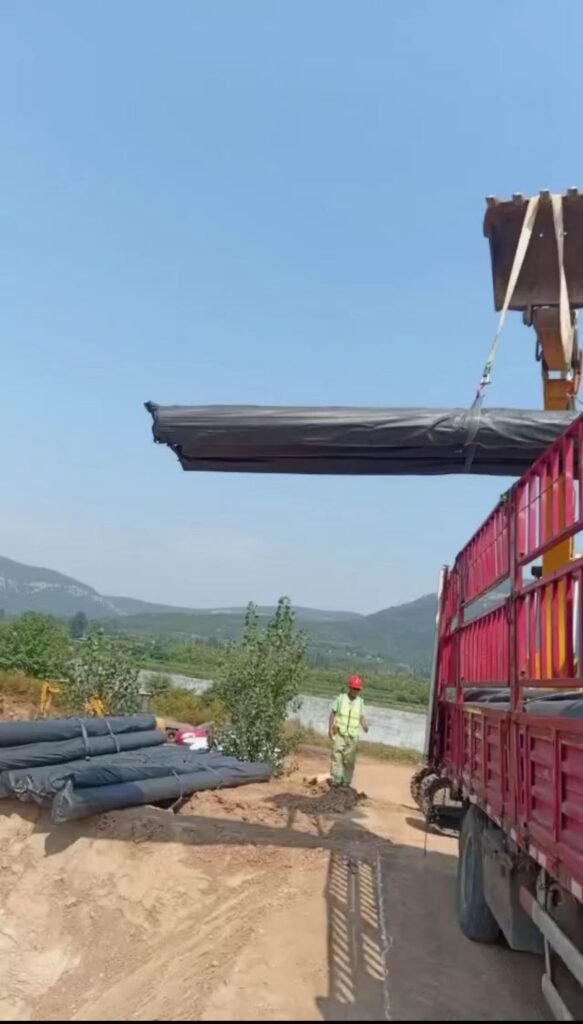
2.What Are Functions of Geomembrane For Mining Projects?
2.1 Seepage Control: Geomembranes offer excellent seepage control properties, effectively preventing water penetration and are widely used in anti-seepage projects such as sewage treatment plants, artificial lakes, and tailings ponds.
2.2 Soil Stability Enhancement: Geomembranes offer excellent tensile strength and tear resistance, maintaining stability despite uneven geological settlement and meeting the demands of high-standard projects.
2.3 Soil Erosion Reduction: Geomembranes control soil moisture, reduce soil erosion, and protect soil from erosion.
2.4 Corrosion Resistance: Geomembranes offer excellent corrosion resistance, resisting the effects of various chemicals, thereby protecting building structures and interior finishes.
2.5 Aging Resistance: Geomembranes offer strong aging resistance, allowing them to maintain their original performance even after prolonged exposure.
These properties make geomembranes important in civil engineering and environmental protection projects.
3.What Are Advantages of Geomembrane For Mining Projects?
3.1 Geomembranes for mining projects can prevent soil erosion, a common problem during mining operations. The application of geomembranes can prevent this, protecting the surrounding environment of mining areas and preventing soil loss.
3.2 Geomembranes for mining projects can control groundwater contamination. Geomembranes can prevent pollutants from coming into contact with groundwater, thereby reducing the risk of groundwater contamination.
3.3 Geomembranes for mining projects are a guarantee of safe mining operations, as they can reduce the risk of mine flooding and improve mine safety.
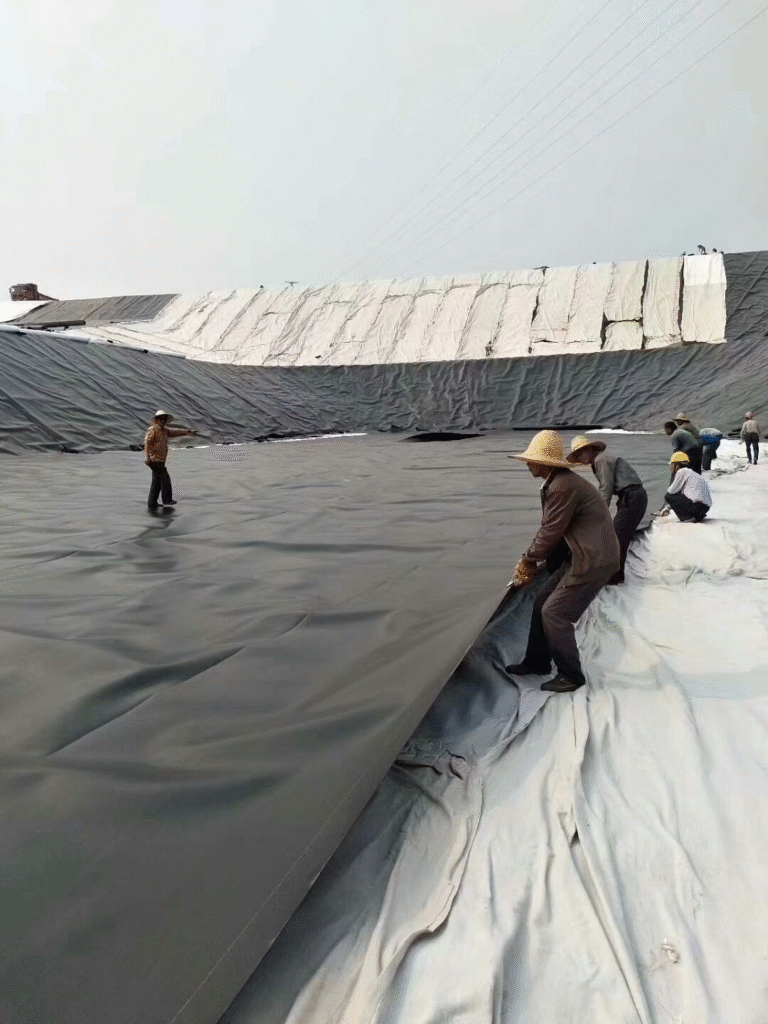
4.Where Can Geomembrane be Used in Mining?
4.1 Geomembrane for Mining Projects can be laid in drainage pipes and catch basins during mine drainage system construction to prevent sewage infiltration and leakage.
4.2 Geomembrane for Mining Projects can be used in tailings pond anti-seepage projects, reducing the risk of dam failure and ensuring the safety of the surrounding environment.
4.3 Geomembrane for Mining Projects can be used to fill and cover mined-out areas. Because mined-out areas are prone to ground collapse and flooding, geomembranes are crucial, preventing water from entering the area and reducing the risk of ground collapse.
4.4 Geomembrane for Mining Projects can prevent harmful substances from stockpiled materials from penetrating into the soil, protecting groundwater and the surrounding environment.
4.5 Geomembrane for Mining Projects can remediate and improve soil quality, preventing soil erosion and controlling the spread of pollutants.
Geomembranes have numerous uses and applications in mining projects, and their application can improve mining safety.
5. What Are Disadvantages of Geomembrane For Mining Projects?
5.1 High Foundation Requirements
The anti-seepage effectiveness of geomembrane for mining projects depends largely on the foundation conditions on which it is laid. Uneven foundations, sharp objects, or cracks can directly impact the anti-seepage performance and service life of the geomembrane for mining projects. Therefore, before installing the geomembrane, the foundation must be rigorously inspected and treated to ensure it meets installation requirements.
5.2 Susceptibility to UV Light
Although geomembrane for mining projects has good weather resistance, long-term exposure to strong UV rays can still cause aging and deteriorate its performance. Therefore, when used outdoors, sunshades and sunscreens should be implemented to protect the geomembrane from UV damage.
5.3 High Cost
Geomembrane for mining projects is a high-performance engineering material, but its relatively high price limits its use in low-cost projects. However, considering its effectiveness in anti-seepage, isolation, and long service life, its cost-effectiveness remains highly competitive.
6.Main Considerations When Choosing the Best Geomembrane For Mining Projects
6.1. Tensile Strength: Tensile strength is one of the most important indicators of geomembrane material strength. Only geomembranes with sufficient strength can withstand the weight and pressure of the protected material.
6.2. Chemical Resistance: Geomembranes must be resistant to various chemicals, such as acids, alkalis, and salts. These chemicals may damage geomembranes with low chemical resistance.
6.3. Biocompatibility: Geomembranes must be compatible with the protected material and not negatively impact it. If the geomembrane is incompatible with the protected material, it may cause a biorepellent reaction, which will affect the protective effect.
6.4. Service Life: The service life of a geomembrane depends on the operating conditions and the selected material. Geomembranes with longer service lives generally provide better protection.
6.5. The performance of the geomembrane must be stable. This means that it must be able to maintain its integrity and functionality throughout its service life to protect water resources from pollution and loss. Therefore, it is very important to choose a geomembrane with sufficient strength and durability.
6.6. The thickness of the geomembrane is also an important consideration. Geomembranes of varying thicknesses are suitable for different applications, such as protection, filtration, and conservation. Therefore, when selecting a geomembrane, it’s important to choose the appropriate thickness based on the intended application.
6.7. The environmental performance of the geomembrane is also a factor to consider. Selecting environmentally friendly geomembrane materials can help reduce environmental impact and protect natural resources and ecosystems. Therefore, when choosing a geomembrane, consider its environmental performance.
6.8. Thickness: The price of a geomembrane depends on its material and thickness.
Geomembranes generally range in thickness from 0.10 to 3.0 mm, and prices vary. Better quality translates to higher prices, while thicker and heavier geomembranes also increase the price.
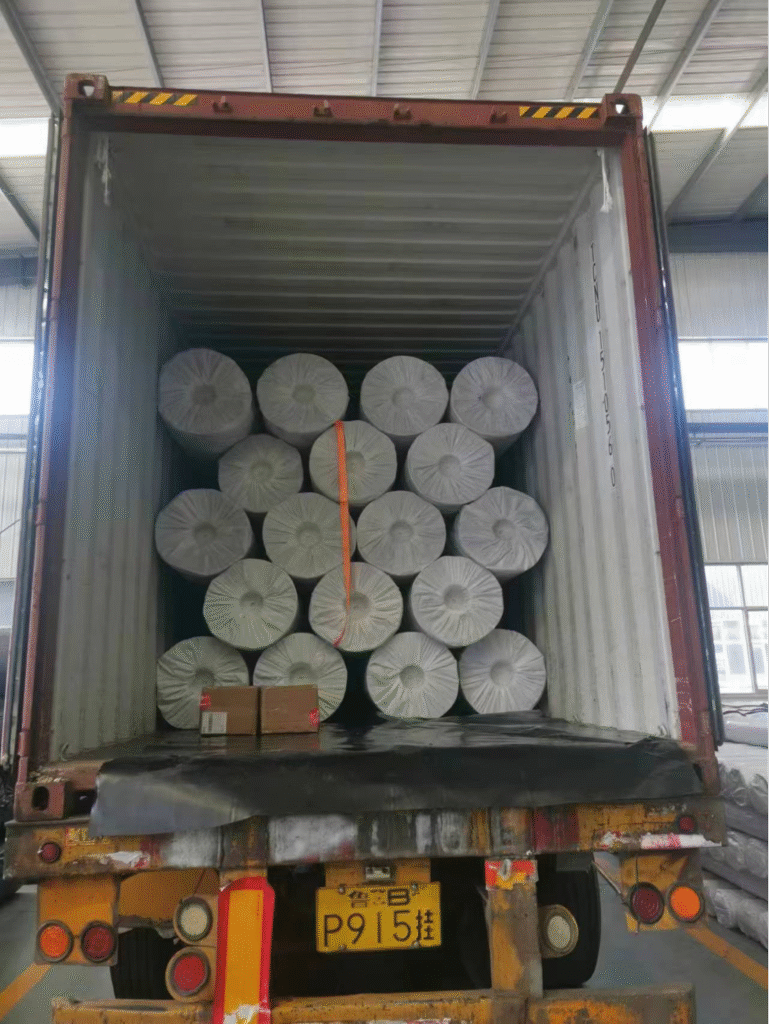
7. Final Thoughts
Geomembranes offer excellent anti-seepage properties, good physical and chemical stability, easy construction, and environmental protection and energy conservation, making them suitable for a wide range of applications. However, they also have disadvantages such as high infrastructure requirements, susceptibility to UV rays, and high cost. Therefore, when using geomembranes, it is important to fully consider their advantages and disadvantages and make appropriate selections based on specific project conditions.
